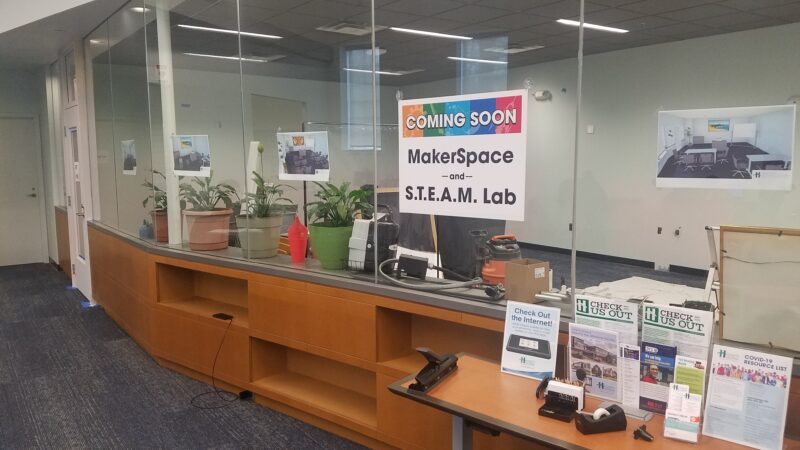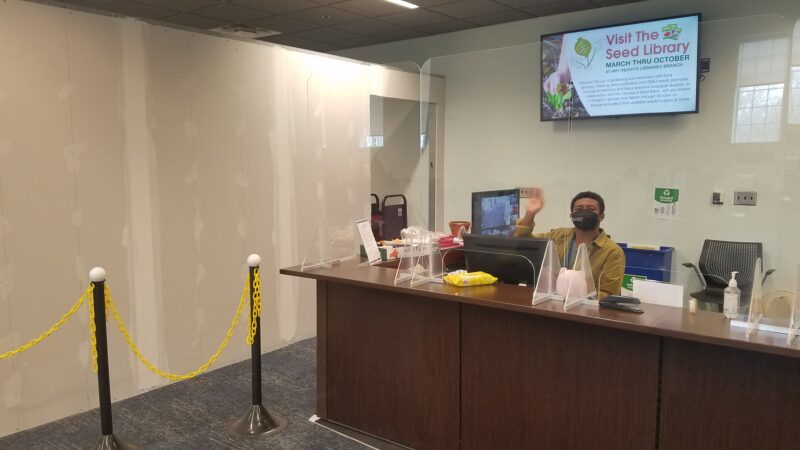 The joint makerspace and flexible-learning center will replace rows of desktop computers that inhabited HKIC’s semi-enclosed computer lab, which has been closed to the public since the start of the COVID-19 pandemic.
The joint makerspace and flexible-learning center will replace rows of desktop computers that inhabited HKIC’s semi-enclosed computer lab, which has been closed to the public since the start of the COVID-19 pandemic.
“We wanted to take a space that wasn’t ideal for use as a traditional computer lab and make it more flexible,” said Heather Howiler, continuing education manager.
The STEAM Lab will include two 3-D printers, a projector, moveable tables, seating areas, whiteboards, and other maker and virtual-reality equipment.
“The STEAM Lab will serve as an enclosed, multipurpose space for visitors of all ages to explore STEAM-related technology using a hands-on approach,” said Nia Turner, technology trainer. “Our community needs a space that will accommodate programs like our Tech Talks, youth technology classes, and gaming club activities. Having flexible furniture will allow staff to configure the room in whatever way we need to, whenever needed.”
Unlike a traditional makerspace, in which users can access technology to complete set tasks such as 3-D printing, the programming in the STEAM Lab will equip users with a more holistic understanding of these emerging technologies.
“We love the concept of this space going beyond just a makerspace,” said Howiler. “We want it to be about education, engagement and innovation, so what better than to call it STEAM Lab, with its focus on science, art, technology, engineering and mathematics? Think of it, in a way, as a way to kind of play.”
The STEAM Lab will focus primarily on lifelong learning, one of the library’s core values.

Is that a new wall? Yes it is!
“When we talk about the STEAM Lab, what we’re talking about is the STEAM approach to learning,” said Turner. “Lifelong learning is intertwined with STEAM education. We want this to be an intergenerational space—a place where everyone can come together and learn in a way that promotes growth and discovery as a community.”
The library has taken a design-thinking approach to developing the lab, which emphasizes experimentation and adaptation of the space based on library users’ changing needs.
“If the pandemic has taught us anything, it is that flexibility is key,” said Turner. “Being receptive to hearing what the community needs and wants, and being able to adjust our space and programs and services to meet what they do want, will allow us to do just that. The computer area we had was very rigid, and we hope this new space won’t be anything like that.”
The STEAM Lab is currently in the planning and development stage, with the goal to be fully open to the public for programming by Labor Day. In the meantime, computers will continue to be available for public use in HKIC’s main lobby.
